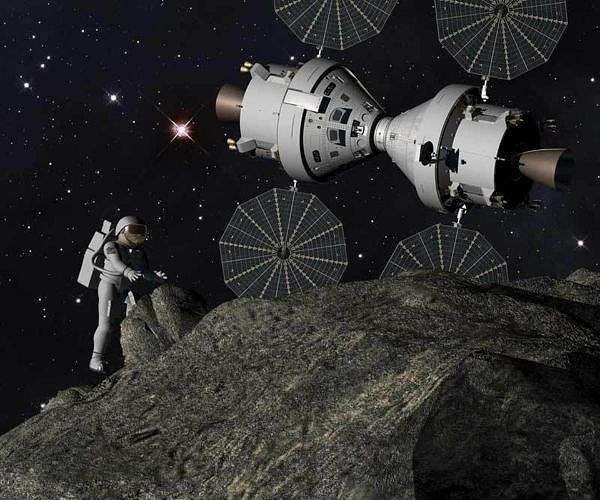17.09.2020
OHB to build ESA’s Hera asteroid mission
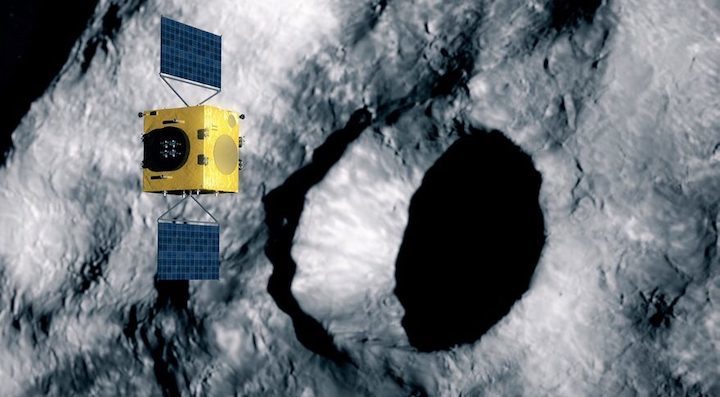
WASHINGTON — The European Space Agency on Sept. 15 finalized a contract worth 129.4 million euros ($153.3 million) with German satellite manufacturer OHB to build its Hera asteroid spacecraft with a pan-European consortium.
OHB will lead a team of companies from 17 ESA member states to complete Hera ahead of an October 2024 launch. Hera is scheduled to reach a binary asteroid pair called Didymos and Dimorphos in late 2026 for a minimum-six-month study of the asteroid system.
Hera is ESA’s second attempt at sending a planetary defense mission to an asteroid. It draws heavily on an earlier program called the Asteroid Impact Mission that was canceled in 2016 after failing to secure funding.
Hera will follow NASA’s Double Asteroid Redirection Test, or DART, which is scheduled to launch in July 2021 on a SpaceX Falcon 9 rocket. DART will crash into the smaller of the two asteroids, Dimorphos, in September 2022, to test a technique for deflecting an asteroid on a collision course with Earth.
While DART will carry a cubesat co-passenger that will be released prior to the collision to conduct an initial post-collision fly-by, Hera will provide a more thorough assessment of the impact and determine how much the asteroids’ orbits changed.
Hera, according to ESA, aims to convert the results of DART from a “grand-scale experiment into a well-understood and repeatable asteroid deflection technique.”
Some 15% of asteroids are in binary orbits, according to the agency. In the binary system DART and Hera will visit, Dimorphos measures 160 meters in diameter and is about the size of the Great Pyramid of Giza, while its larger companion measures 780 meters across and is the size of a mountain. Material ejected from DART’s impact is expected to land on both asteroids.
OHB’s contract covers Hera’s design, integration and testing. The 1,050-kilogram spacecraft will carry two cubesats, one from GomSpace and one from Tyvak International, for which ESA is negotiating final contracts.
GomSpace plans to build the Juventas cubesat in Luxembourg, which will scan the interior of Dimorphos using a low-frequency radar.
The Italian-led Milano cubesat from Tyvak International will conduct dust and mineral prospecting studies.
Hera will act as a carrier for the two cubesats and as a relay station for communications with Earth for the spacecraft. ESA will control the Hera mission from the European Space Operations Centre in Darmstadt, Germany.
Quelle: SN
+++
ESA’s Hera planetary defense mission signs prime contractor, on course for launch in 2024
The European Space Agency (ESA) has signed a design, manufacturing, and testing contract with OHB of Germany for their Hera planetary defense mission, marking a major advancement toward the agency’s commitment to NASA for their joint Asteroid Impact and Deflection Assessment project.
NASA’s portion is scheduled to launch in July 2021 and slam into the smaller of the target binary asteroid in October 2022. Hera will then follow, launching in 2024 on an Ariane 6 and arriving at the binary pair in 2027 to assess how well its predecessor did in changing the orbit of its target.
The contract signed today between ESA and OBH of Germany provides €129.4 million for a detailed design, build, and test of the Hera asteroid orbiter. The contract specifically includes the new and advanced Guidance, Navigation and Control system for the craft.
Excluded from the OBH contract are the other deals already in place for the two CubeSats that will accompany Hera to the target binary asteroid and the long-lead technology items for the mission — contracts that are already underway.
Unlike the first part of the joint Asteroid Impact and Deflection Assessment project from NASA, an impactor called DART, Hera will not impact either of the bodies of the target but rather perform long-term observations from a close orbit while demonstrating new technologies, particularly for autonomous deep space proximity operations.
The target for the joint mission is the Didymos pair, a binary asteroid whose primary is 780 m in diameter and whose moonlet (small moon) is 160 m in diameter.
The moonlet, called Dimorphos, is the target of NASA’s DART kinetic impactor.
Powered by a NEXT ion thruster, the 500 kg (1,100 lb) spacecraft will spend 15 months cruising to its destination before slamming into Dimorphos at 6.25 km/s.
DART carries no scientific instruments, just a star tracker and camera for autonomous navigation; it is simply an impactor. It will, however, carry with it an Italian-provided CubeSat called LICIACube (Light Italian CubeSat for Imaging of Asteroids) that will deploy shortly before observing the ejecta cloud thrown up from the impact.
LICIACube will collect images of the impact and ejecta and transmit its captured photographs back to Earth; it was offered to DART by the Italian Space Agency after ESA’s first spacecraft contribution to the mission was cancelled in 2016.
That project, the Asteroid Impact Mission, would have worked in tandem with DART, observing the other craft’s impact while providing immediate and long-term assessments of changes to Dimorphos’ orbit and characteristics while studying the ejecta material.

Hera investigates DART’s impact crater. (Credit: ESA)
While Hera will not be able to do that first part, most of the Asteroid Impact Mission’s objectives can be accomplished with LICIACube and Hera’s long-term in situ observations that can begin upon its arrival in 2027.
The overall mission will test whether or not a kinetic impactor can successfully deflect potentially hazardous Earth-bound asteroids by slightly changing their orbital speed to either slow them down slightly or accelerate them slightly.
And this is exactly what NASA and ESA seek to do on a smaller scale in the Didymos pair system. The DART spacecraft, while impacting Dimorphos at 6.25 km/s will only produce a net change in the moonlet’s velocity of 0.4 millimeters per second.
While that is an incredibly small change in velocity, it will radically change the mutual orbit of the Didymos primary and its moon.
As such, the interagency mission represents the first time humanity will intentionally alter another celestial body’s orbit.
By impacting the smaller of the two bodies, which orbits the larger, NASA and ESA can safely observe how a kinetic impactor alters orbital characteristics of an asteroid.
The Didymos pair’s overall orbit of the Sun is also extremely favorable to this type of test as its orbit does not cross that of Earth’s — meaning there’s no chance the NASA-ESA experiment could accidentally cause this pair to pose a threat to our host planet.
When Hera then arrives in 2027, it will find a very different system than the DART spacecraft encountered while on approach for impact.
Hera will use a suite of scientific instruments as well as two ride along CubeSats (which will attempt to land on the surface of Dimorphos) to characterize exactly how much momentum was transferred between the two objects at DART’s impact and exactly how much Dimorphos’ orbit was altered.
This will “allow, for the first time, the validation or refinement of numerical models of the impact process at asteroid scale, rendering this deflection technique for planetary defence ready for operational use if ever needed to safeguard our home world,” notes an ESA overview of the mission.
Hera will accomplish its scientific objectives by utilizing:
- an Asteroid Framing Camera provided by Germany (that is actually a spare unit for NASA’s Dawn spacecraft in the asteroid belt),
- a compact laser radar, or lidar, for surface mapping operations,
- a thermal infrared instrument to survey the asteroid in the mid-infrared spectral range and map temperature dispersions across Dimorphos’ surface, and
- a radio science experiment to measure the mass and mass distribution within the moon.
These instruments will be supplemented by those carried aboard the two CubeSats, which will use radar to investigate the interior of the moonlet as well as imaging and mass spectrometers to study its mineralogical and elemental composition.
Quelle: NS
+++
Industry starts work on Europe’s Hera planetary defence mission
Today ESA awarded a €129.4 million contract covering the detailed design, manufacturing and testing of Hera, the Agency’s first mission for planetary defence. This ambitious mission will be Europe’s contribution to an international asteroid deflection effort, set to perform sustained exploration of a double asteroid system.
Hera – named after the Greek goddess of marriage – will be, along with NASA's Double Asteroid Redirect Test (DART) spacecraft, humankind’s first probe to rendezvous with a binary asteroid system, a little understood class making up around 15% of all known asteroids.
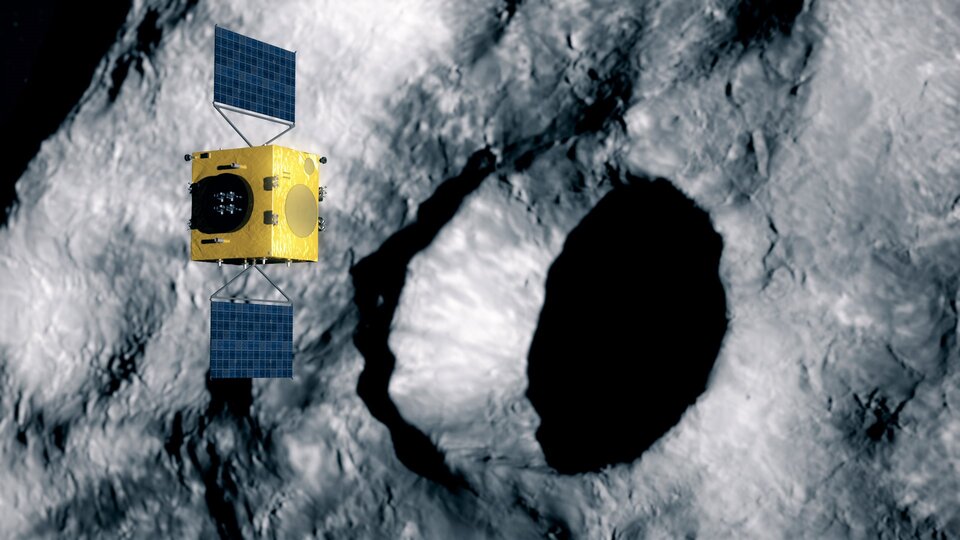
The contract was signed today by Franco Ongaro, ESA Director of Technology, Engineering and Quality, and Marco Fuchs, CEO of Germany space company OHB, prime contractor of the Hera consortium. The signing took place at ESA’s ESOC centre in Germany, which will serve as mission control for the 2024-launched Hera.
Hera is the European contribution to an international planetary defence collaboration among European and US scientists called the Asteroid Impact & Deflection Assessment, AIDA. The DART spacecraft – due for launch in July 2021 – will first perform a kinetic impact on the smaller of the two bodies. Hera will follow-up with a detailed post-impact survey to turn this grand-scale experiment into a well-understood and repeatable asteroid deflection technique.
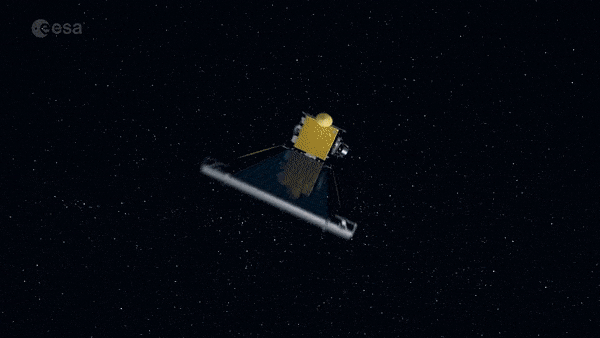
While doing so, the desk-sized Hera will also demonstrate multiple novel technologies, such as autonomous navigation around the asteroid – like modern driverless cars on Earth – while gathering crucial scientific data, to help scientists and future mission planners better understand asteroid compositions and structures.
Hera will also deploy Europe’s first ‘CubeSats’ (miniature satellites built up from 10 cm boxes) into deep space for close-up asteroid surveying, including the very first radar probe of an asteroid’s interior – using an updated version of the radar system carried on ESA’s Rosetta comet mission.
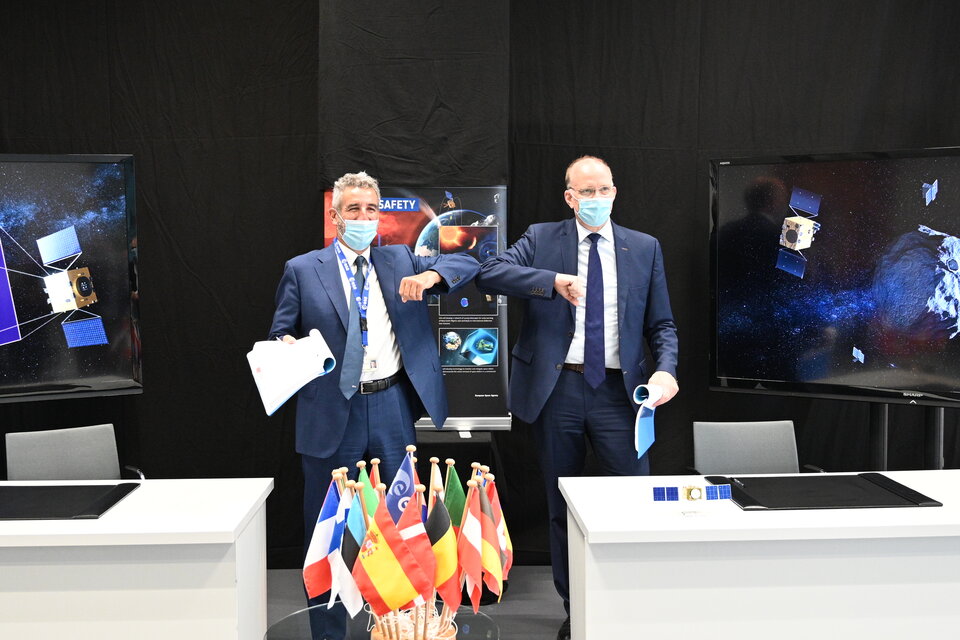
Due to launch in October 2024, Hera will travel to a binary asteroid system – the Didymos pair of near-Earth asteroids. The 780 m-diameter mountain-sized main body is orbited by a 160 m moon, formally christened 'Dimorphos' in June 2020, about the same size as the Great Pyramid of Giza.
DART’s kinetic impact into Dimorphos in September 2022 is expected to alter its orbit around Didymos as well as create a substantial crater. This moonlet asteroid will become unique, as the first celestial body to have its orbital and physical characteristics intentionally altered by human intervention. Hera will arrive at the Didymos system at the end of 2026, to perform at least six months of close-up study.
Hera’s mission control will be based at ESA’s ESOC centre in Darmstadt, Germany, also the home of ESA’s new Space Safety and Security programme, of which Hera is a part.
This contract signing covers the full Hera satellite development, integration and test, including its advanced guidance, navigation and control (GNC) system. Contracts for Hera’s two hosted CubeSats and relevant technology developments are already ongoing.

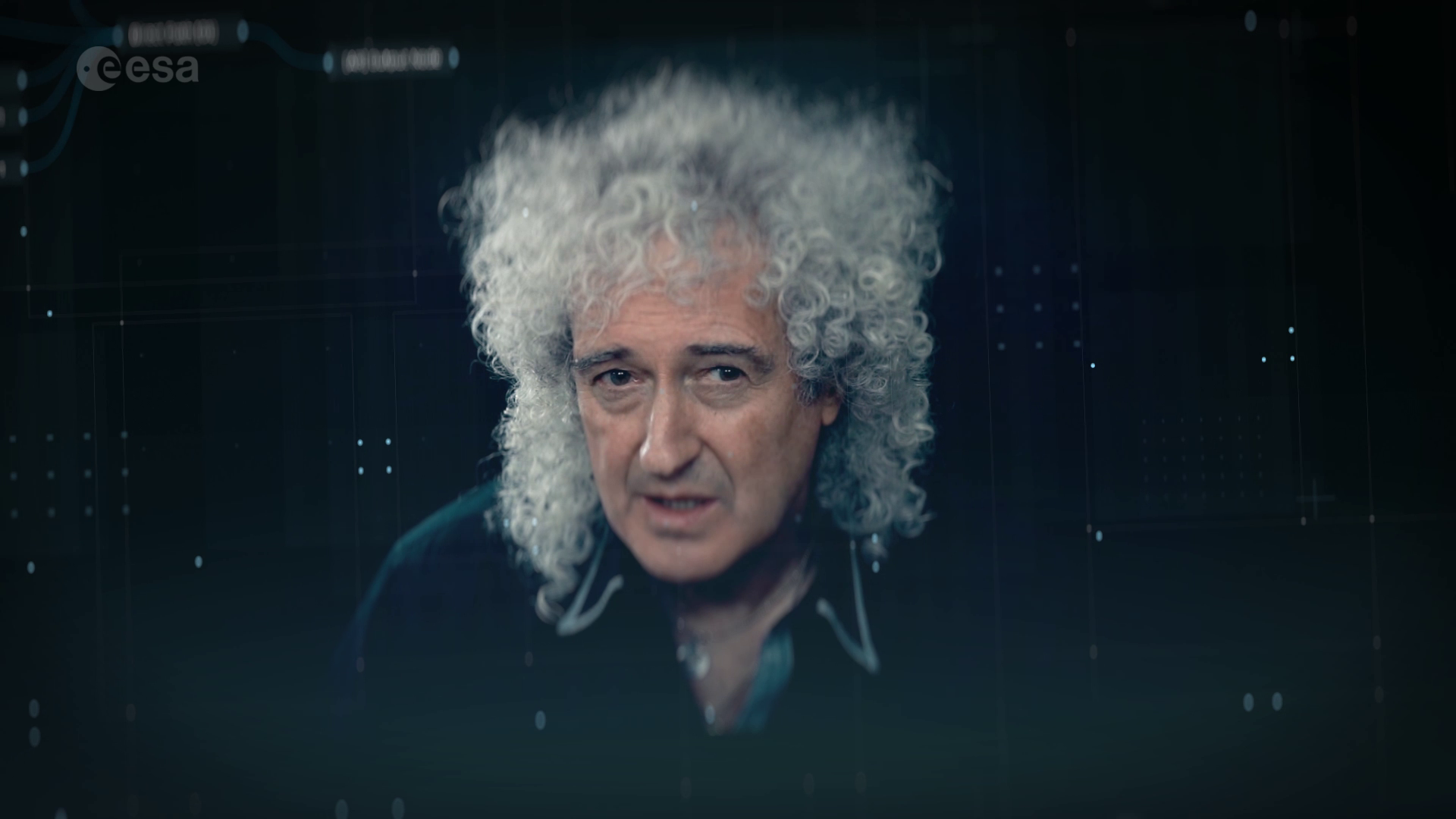
ESA and JAXA meet online to agree future cooperation
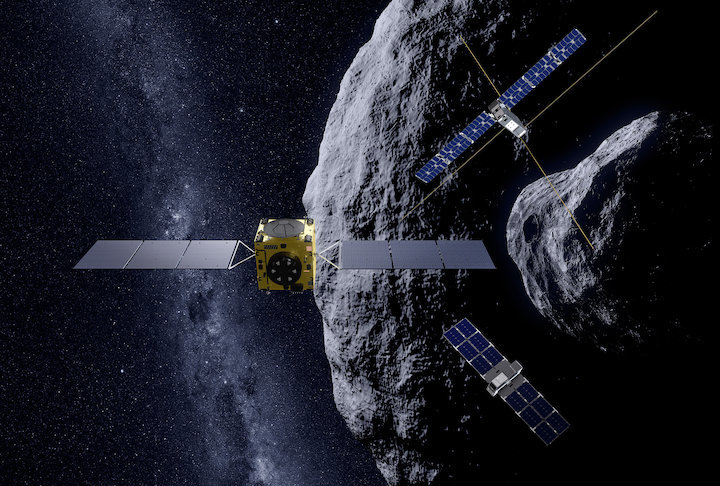
ESA Director General Jan Wörner and President of the Japan Aerospace Exploration Agency (JAXA) Dr Hiroshi Yamakawa took part in an online bilateral meeting on 4 February, confirming the status of cooperative activities between the two agencies.
The areas of cooperation include activities in Earth observation, space science and exploration. Dr Yamakawa also agreed to promote the JAXA/ESA relationship further with Josef Aschbacher, currently Director of Earth Observation and Director General elect of ESA.

Taking the opportunity of this bilateral meeting, two agreements concerning the cooperation on Hera, an ESA-led mission, and MMX, a JAXA-led mission, were concluded. Prof. Wörner and Dr Yamakawa signed the Hera agreement, and Prof. Günther Hasinger and Dr Hitoshi Kuninaka signed the MMX agreement for ESA and JAXA respectively.
Hera is an international planetary defence mission to carry out observations of the NASA DART mission’s impact on the binary asteroid Didymos. Under this agreement, JAXA contributes to the mission by providing the thermal infrared camera and science collaboration.
MMX is a JAXA exploration mission, which plans to collect a sample from the martian moon Phobos and to bring it back to Earth. The agreement paves the way for ESA to provide JAXA with onboard communication components for the probe and assist in spacecraft tracking and control. ESA’s contribution through science cooperation is also included in the agreement.
Quelle: ESA
----
Update: 19.11.2021
.
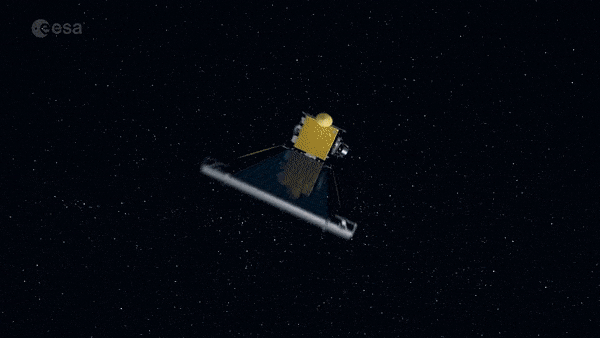
Planetary defenders: after NASA’s DART comes ESA’s Hera
The world will be watching the milestone launch of NASA’s Double Asteroid Redirection Test, DART, spacecraft on Wednesday, 24 November, intended to alter one small part of the Solar System forever.
DART will collide with the small moon of an asteroid in order to shift its orbit around its parent body – to test the concept of diverting threatening objects away from Earth.
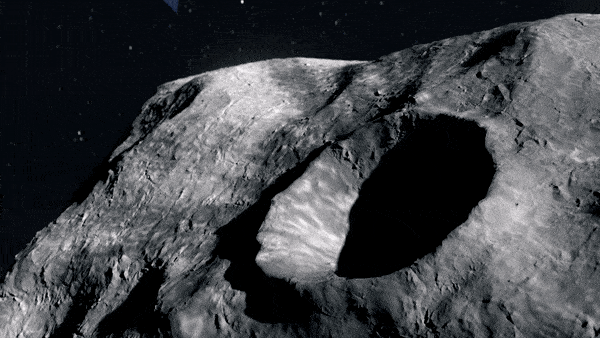
ESA will provide crucial ground station support to DART as it departs for deep space, helping relay signals from the ambitious mission immediately following launch.
Furthermore, one group of Europeans is following DART’s launch campaign particularly closely: the team developing ESA’s Hera spacecraft, designed to undertake a close-up survey of the consequences of DART’s collision.
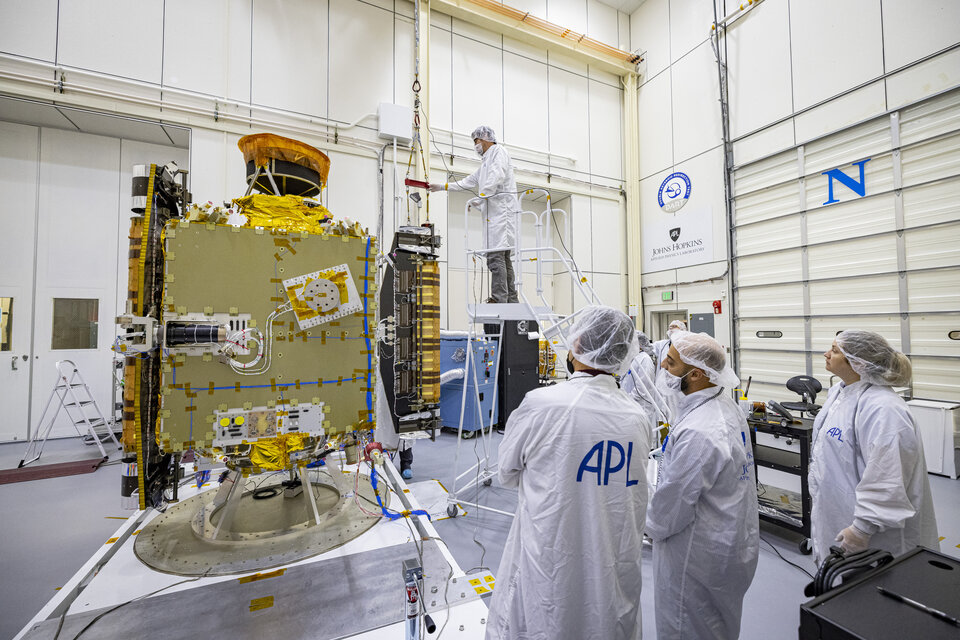
“It has taken a lot of hard work to reach the point of launching this first planetary defence mission – we’re wishing our US counterparts a great and well-deserved success,” comments Ian Carnelli, overseeing ESA’s Hera mission.
“DART and Hera were originally conceived on a coordinated double-spacecraft basis, with one mission to perform the deflection and the other to perform precision measurements of the result.”
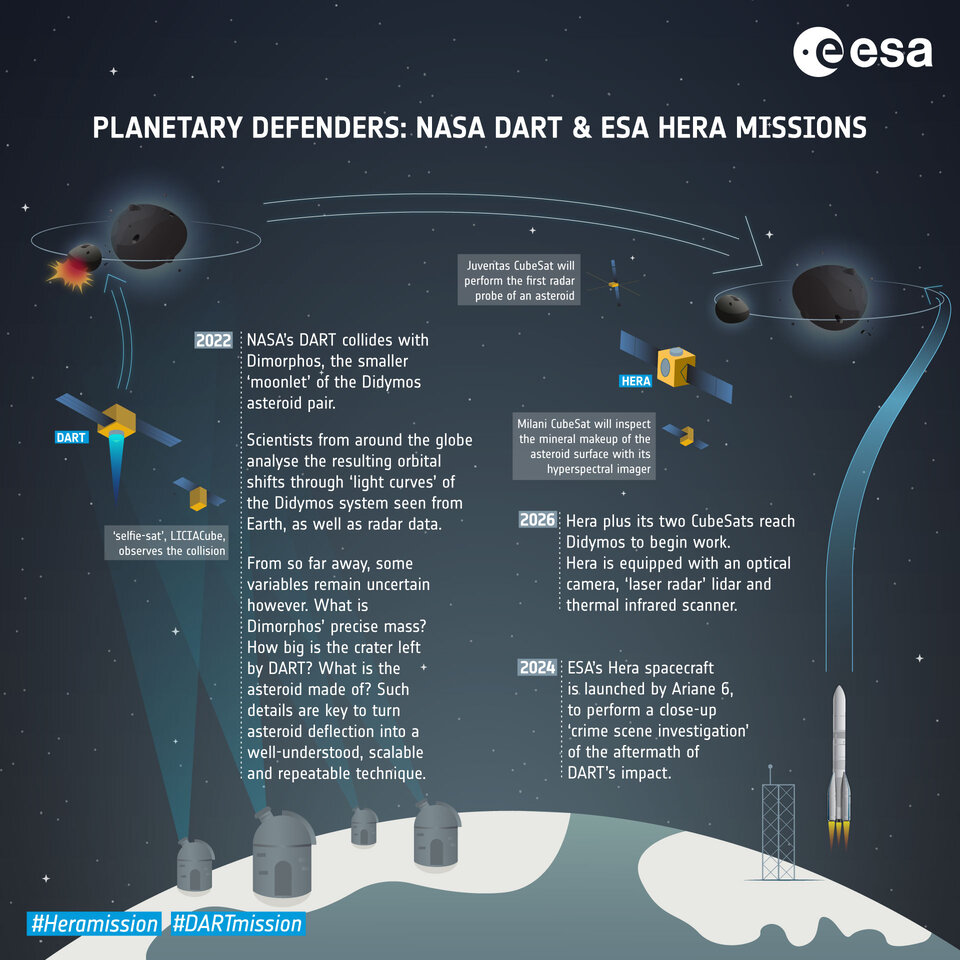
“Over the years, the implementation of the two missions was separated but international collaboration was maintained through the Asteroid Impact and Deflection Assessment, or AIDA, scientific consortium. And while the pair are designed to function separately, their overall science return will be boosted greatly by being able to combine their results.”

DART will collide with the smaller body of the Didymos binary asteroid system in September 2022, striking at a speed of around 6.6 km per second. While the Didymos asteroid system will maintain its motion around the Sun unperturbed, the collision is expected to shift the orbit of the 160-metre-diameter Dimorphos around its 780-metre-diameter parent Didymos in a small but distinct way – just a fraction of one per cent – sufficient to be measured with Earth-based telescopes and radar.
But observing from across space will still leave multiple unknowns, such as the precise mass of Dimorphos, its makeup and its internal structure – as well as the size and shape of the crater left by DART. So, in November 2024 Hera will head towards the Didymos system, commencing its detailed ‘crime scene investigation’ of the two asteroids in late 2026.
By gathering data close-up, Hera will help turn DART’s grand scale impact experiment into a well-understood and repeatable deflection technique – ready to be deployed if an asteroid should ever be spotted heading Earthward.
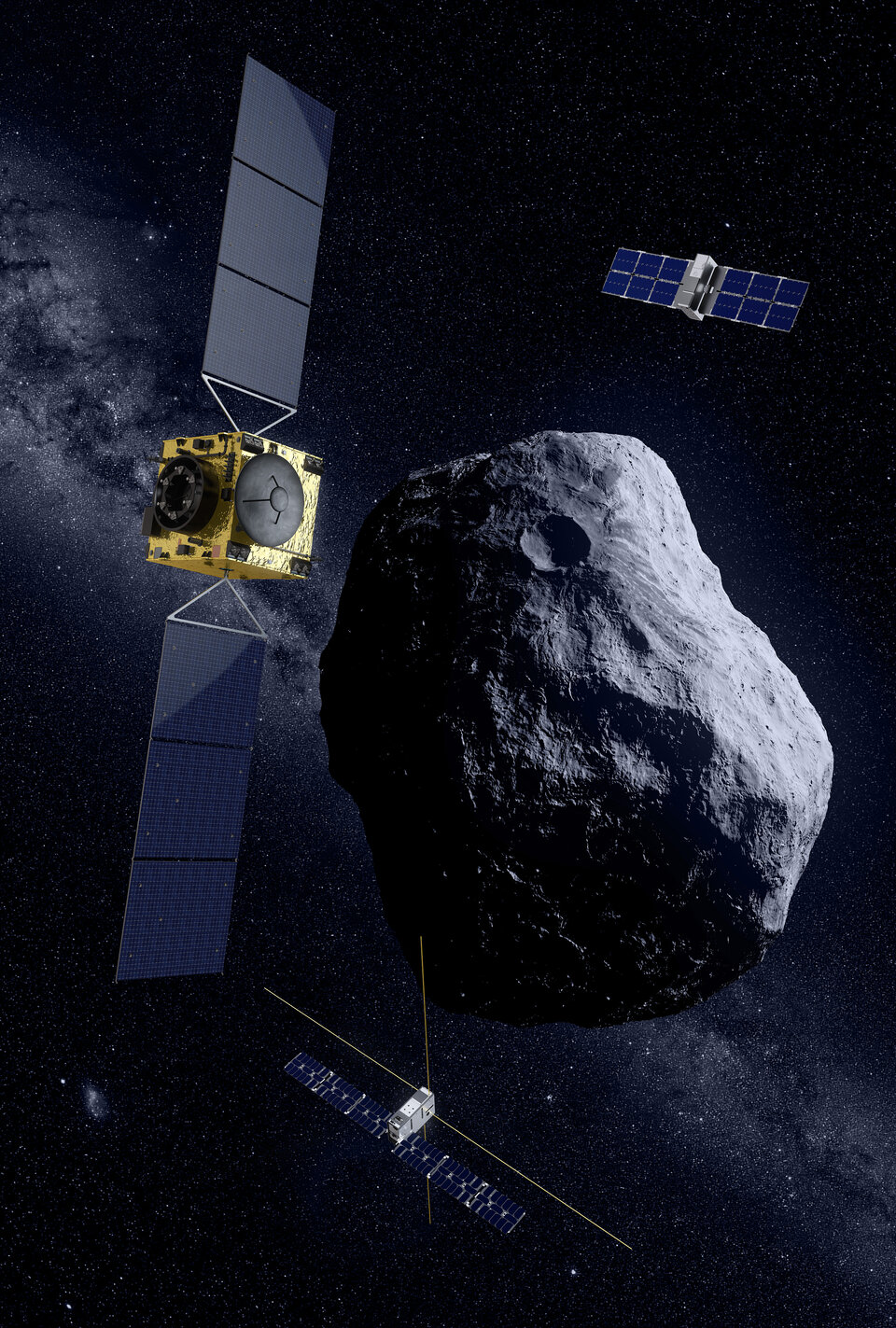
The main Hera spacecraft will also deploy a pair of shoebox sized CubeSats to perform supporting observations: Milaniwill make spectral surface observations, while Juventas will undertake the first-ever radar soundings within an asteroid.
The Hera spacecraft is being built by OHB in Germany while other mission elements take shape across Europe. For instance, the engineering model of Hera’s precision guidance, navigation and control system – essential to guide the desk-sized spacecraft to and around its twin-asteroid destination – is being put together by GMV in Spain, while the Juventas radar prototype is currently undergoing testing at ESA’s ESTEC technical centre in the Netherlands.
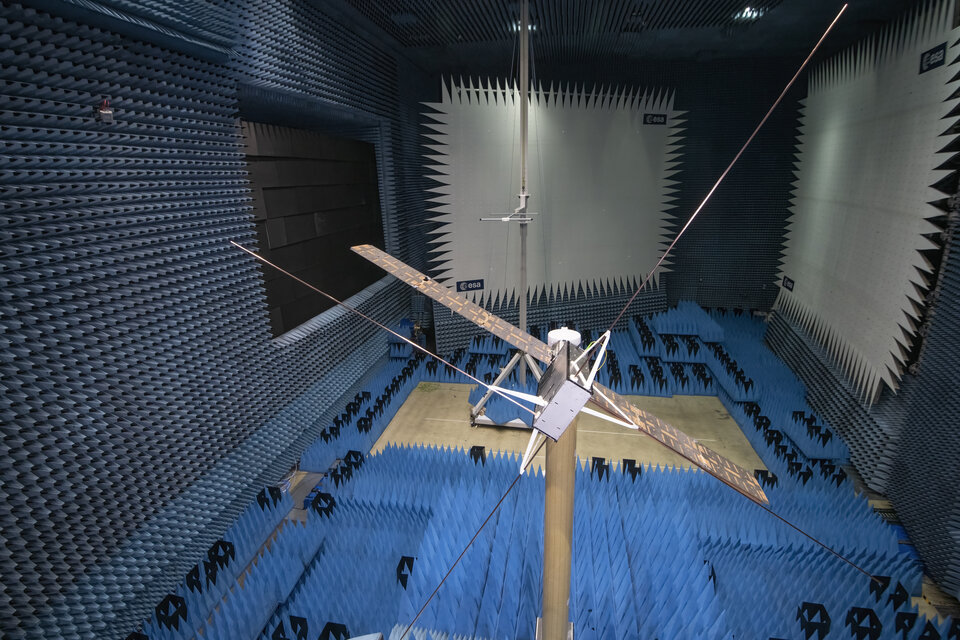
The distant end point of all this activity will soon become much more tangible, notes Patrick Michel, CNRS Director of Research of France’s Côte d'Azur Observatory and Hera’s Principal Investigator. “Either directly or through its accompanying Italian-made LICIACube ‘selfie-sat’, DART next year should give us our first brief close-up of the Didymos system.
“An international community of people are anticipating that initial glimpse, then the more detailed survey that will follow from Hera. In all there are hundreds of researchers from dozens of institutions located across Europe, the US and other countries as far afield as Japan and Uruguay involved in the two missions, their work coordinated through the AIDA collaboration, with a wide cross-participation between DART and Hera scientists.
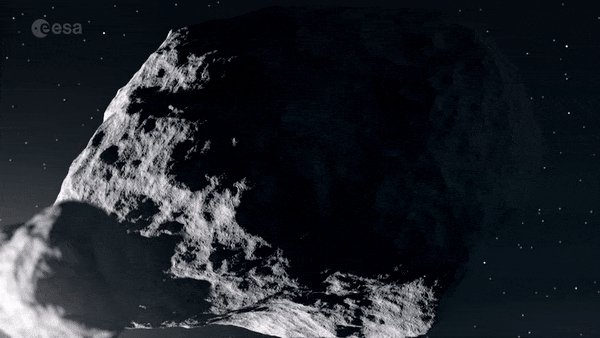
“International cooperation is an essential element in planetary defence endeavours.”
ESA support for DART departure
ESA’s deep space ground station at New Norcia in Western Australia will be supporting NASA’s Deep Space Network during DART’s launch.
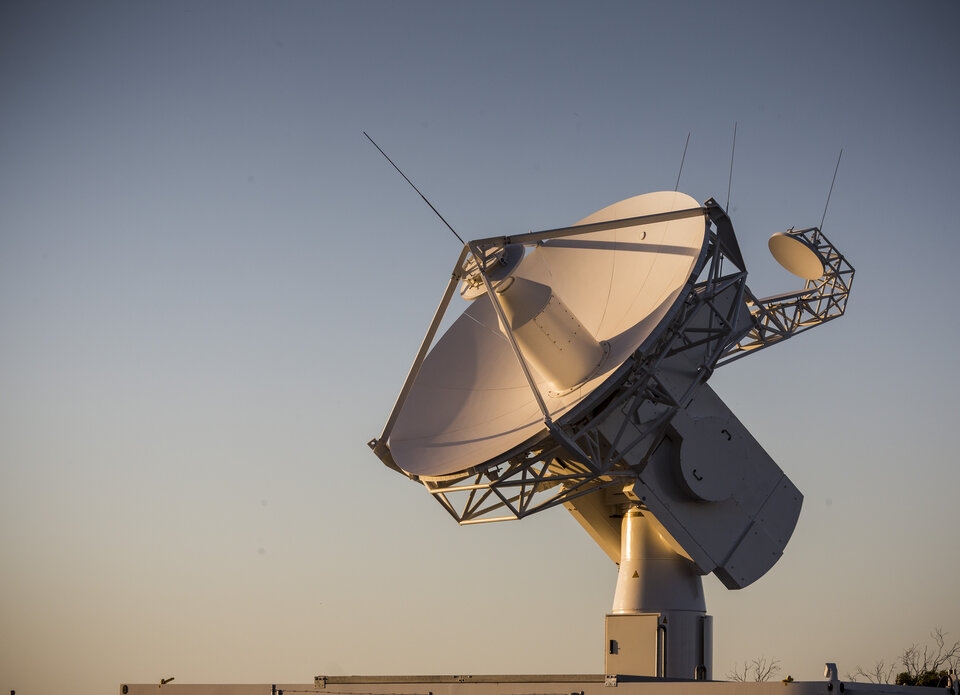
The station’s agile, 4.5m antenna, which is specifically designed for initial acquisition of a spacecraft following launch, will capture the first signal from DART after it separates from its Falcon 9 launcher and help maintain contact as the spacecraft heads into interplanetary space.
Later, additional ESA stations will support other phases of the mission.

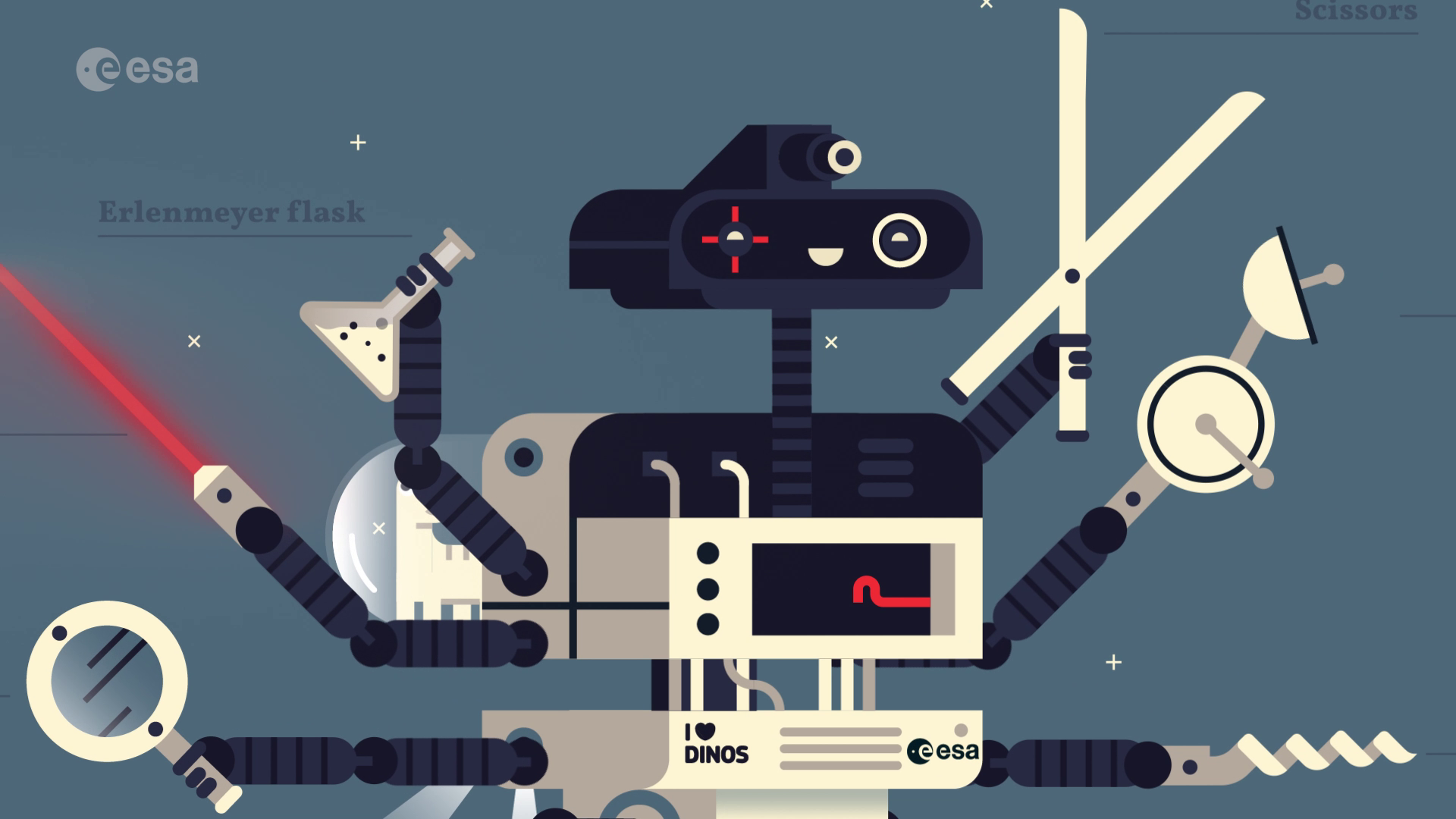
Access the video
Quelle: ESA
----
Update: 24.11.2021
.
After the crash comes Hera
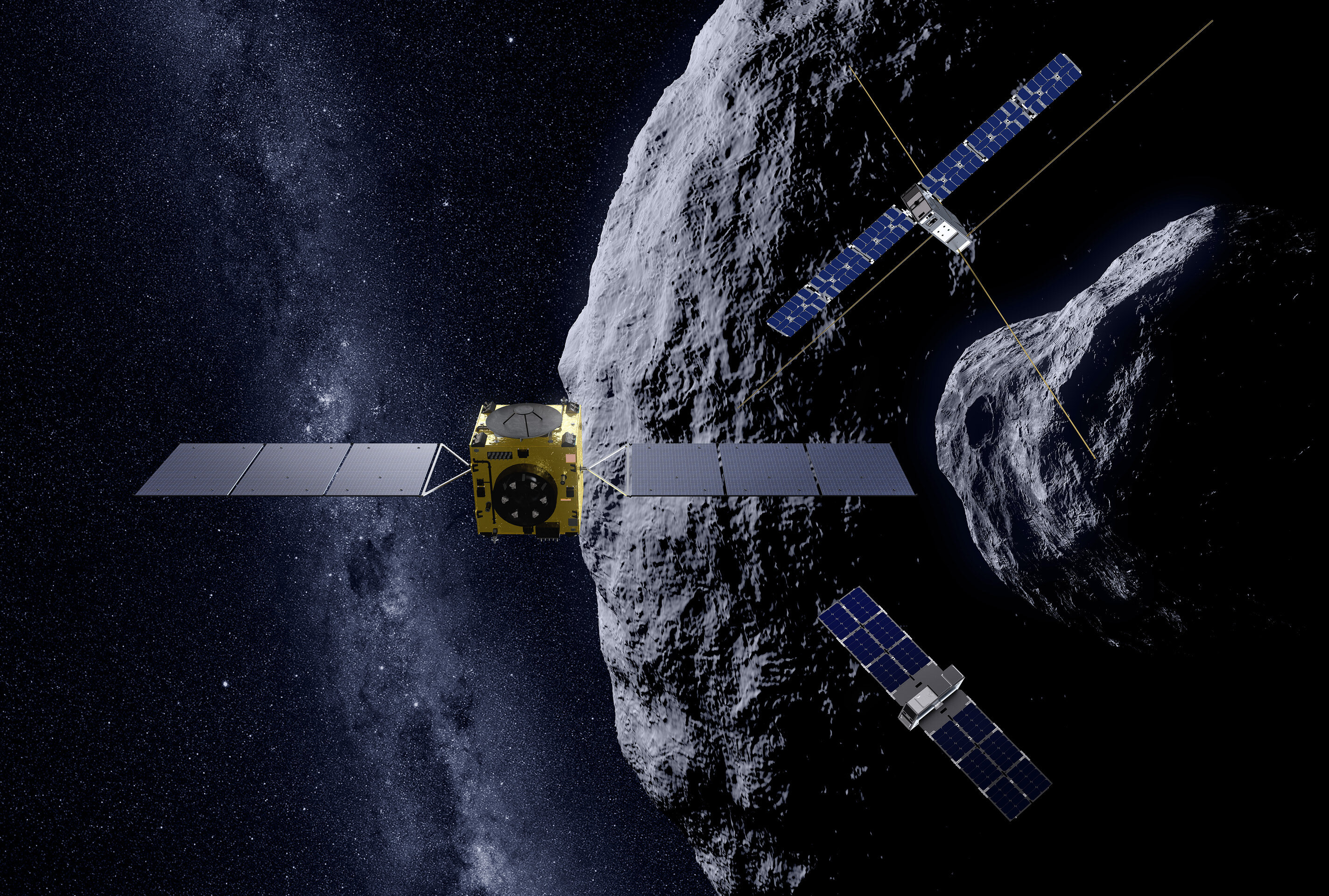
ESA’s Hera mission seen with its CubeSats in orbit around its target asteroid. Now NASA’s Double Asteroid Redirection Test, DART, is on its way to test the kinetic impact technique of asteroid deflection, ESA’s Hera will be Earth’s next planetary defence mission, scheduled to fly to the same body that DART will impact next year.
“I’m extremely happy to see the DART mission on its way,” says Ian Carnelli, managing Hera. “Great work from from NASA, SpaceX and Applied Physics Laborator teams – they make it look easy!”
DART will collide with the smaller body of the Didymos binary asteroid system in September 2022, striking at a speed of around 6.6 km per second. While the Didymos asteroid system will maintain its motion around the Sun unperturbed, the collision is expected to shift the orbit of the 160-metre-diameter Dimorphos around its 780-metre-diameter parent Didymos in a small but distinct way – just a fraction of one per cent – sufficient to be measured with Earth-based telescopes and radar.
But observing from across space will still leave multiple unknowns, such as the precise mass of Dimorphos, its makeup and its internal structure – as well as the size and shape of the crater left by DART. So, in November 2024 Hera will head towards the Didymos system, commencing its detailed ‘crime scene investigation’ of the two asteroids in late 2026.
By gathering data close-up, Hera will help turn DART’s grand scale impact experiment into a well-understood and repeatable deflection technique – ready to be deployed if an asteroid should ever be spotted heading Earthward.
The main Hera spacecraft will also deploy a pair of shoebox sized CubeSats to perform supporting observations: Milani will make spectral surface observations, while Juventas will undertake the first-ever radar soundings within an asteroid.
The Hera spacecraft is being built by OHB in Germany while other mission elements take shape across Europe. For instance, the engineering model of Hera’s precision guidance, navigation and control system – essential to guide the desk-sized spacecraft to and around its twin-asteroid destination – is being put together by GMV in Spain, while the Juventas radar prototype is currently undergoing testing at ESA’s ESTEC technical centre in the Netherlands.
Quelle: ESA
----
Update: 12.06.2023
.
Gravimeter for ESA’s Hera mission is ready to launch to Dimorphos asteroid
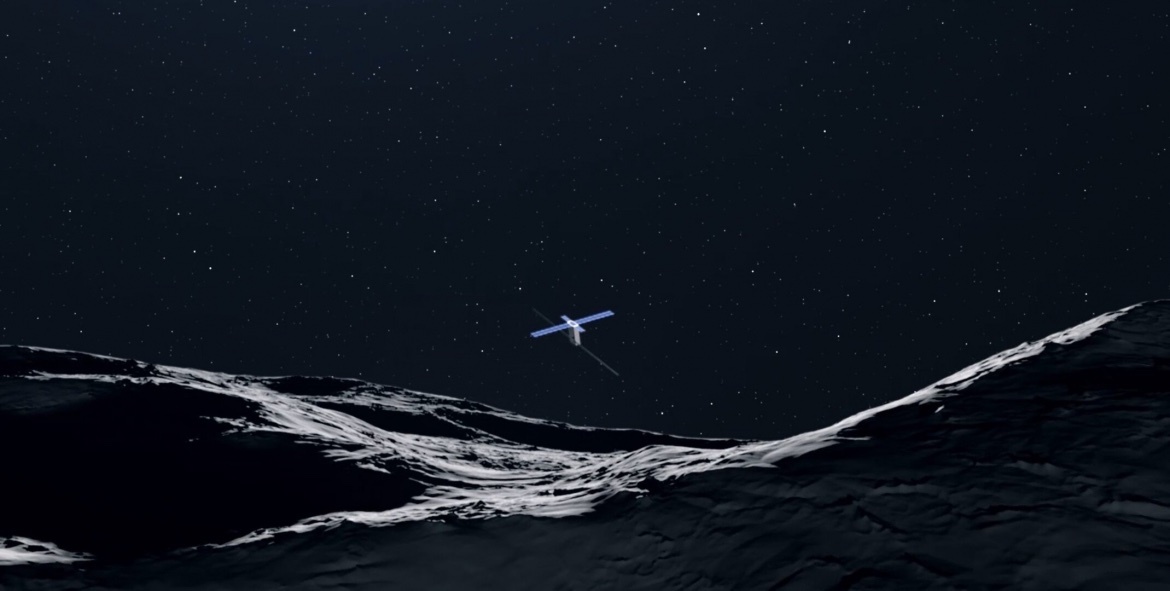
A tiny instrument that can measure the gravity levels of an asteroid has completed its ground tests, pushing the European Space Agency’s (ESA) Hera mission closer to launch. Hera will complete the first post-impact survey of the asteroid that NASA’s Double Asteroid Redirection Test (DART) collided with in September 2022, and the gravimeter for small solar system objects (GRASS) is the small device that will be carried by Hera to measure the minuscule gravity levels of Dimorphos, the orbiting moonlet of the 65803 Didymos binary system.
GRASS is one of the core parts of Hera that will work with the other instruments to provide a clearer picture of the impact made by DART, and is scheduled to launch in October 2024, for a December 2026 rendezvous with Dimorphos.
This follow-up mission forms part of the asteroid impact and deflection assessment, an international collaboration focused on experimenting with kinetic impact as a means of planetary defense against near-Earth objects (NEO) through DART and providing accurate data from the impact through Hera.
What is GRASS?
The tiny GRASS payload, which has a mass of just under 400 grams, is designed to measure the expected gravity levels and the precise mass of the Dimorphos asteroid. The payload is carried in one of Hera’s two cubesats, Juventas, which itself is the size of a shoebox.
ESA describes the gravimeter as the size of two smartphones stuck together, shaped like the letter L. The payload was developed by the Royal Observatory of Belgium (ROB) and Spain-based EMXYS, which was responsible for manufacturing its electronics and mechanical integration.
“It may be small, but GRASS is packed with complex mechanical parts and electronics,” Jose Carrasco, the chief executive officer at EMXYS said.
After Hera completes the subsurface radar imaging campaign of Dimorphos, Juventas will be released and gradually fall onto the surface of the asteroid. During this descent, GRASS will record the impact on the asteroid, subsequent bounces, and any shifts in surface gravity over time from the influence of Didymos, ESA explains.
“It will be in the final falling phase that GRASS will start working to measure the gravitational attraction of the asteroid and thus picturing its mass distribution while it falls, lands [after some rebounds], and sits still on the surface of the asteroid,” Carrasco told NSF.
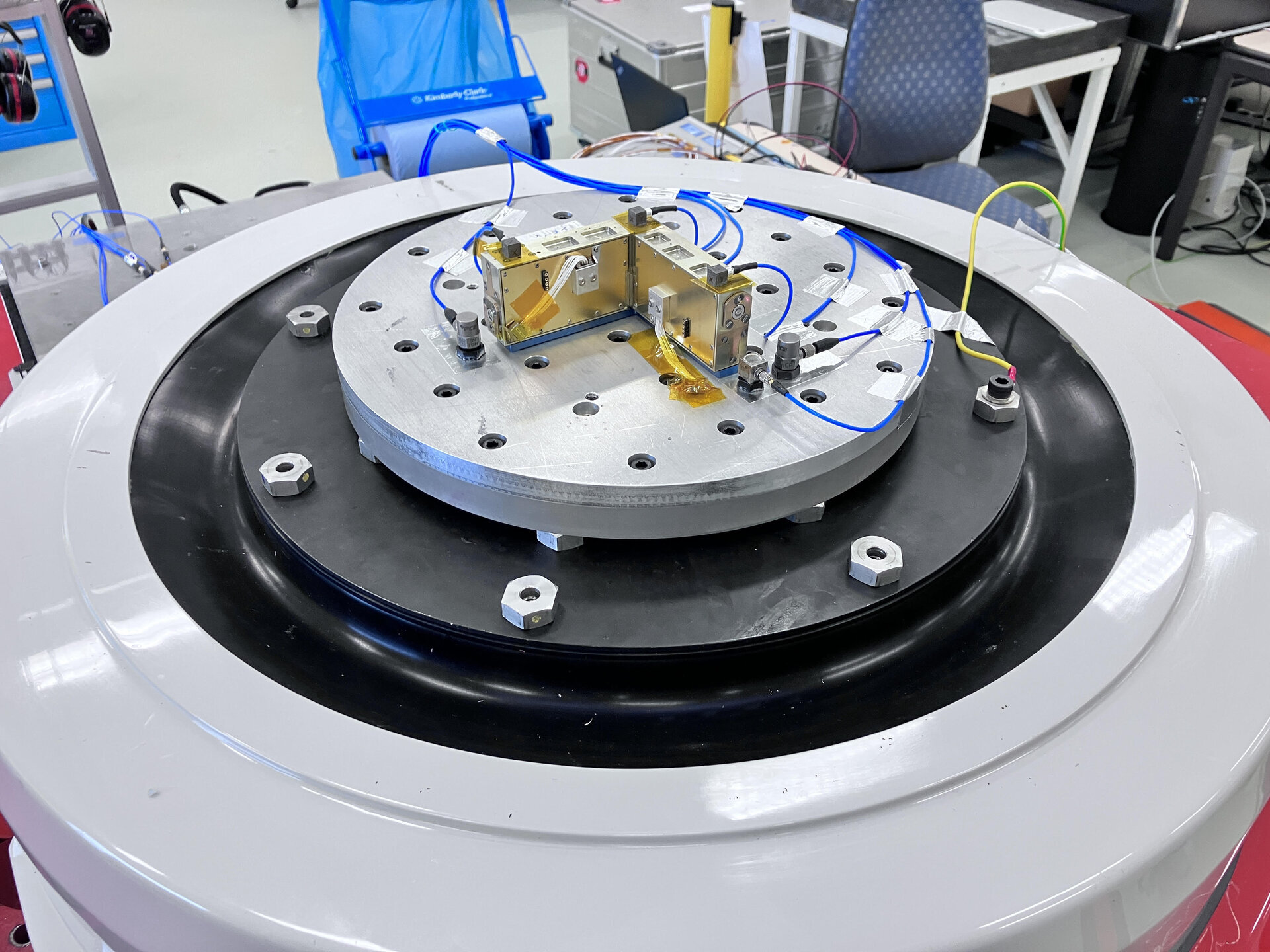
The gravimeter can detect the slightest motion, with the sensitivity equivalent of a single micrometer, or a thousandth of a millimeter.
“GRASS has two small masses attached to two beams placed orthogonally to each other that rotate at around one revolution per minute. By measuring the small displacements of these beams and the mass, it is possible to reconstruct the gravity in three dimensions,” continued Carrasco.
“As the measurements are made during the free fall of Juventas over Dimorphos, that will follow a bent trajectory before the impact, it will measure the gravity field from several different positions and therefore may reconstruct the mass distribution of the asteroid.”
The Hera mission is particularly interesting as it will mark the first probe to rendezvous with a binary asteroid and will be the smallest planetary object a spacecraft has ever visited. While the asteroid may be small compared to other planetary objects measuring at 160 meters in diameter, it is the same size as Egypt’s Great Pyramid of Giza.
One of the most significant impacts of DART’s collision with the asteroid was that it reduced Dimorphos’ orbital period around Didymos by 32 minutes. The Hera probe will be able to characterize even more changes like this and turn “the kinetic impact experiment into a well-understood and in principle repeatable method of planetary defense,” according to Hera system engineer Hannah Goldberg.




